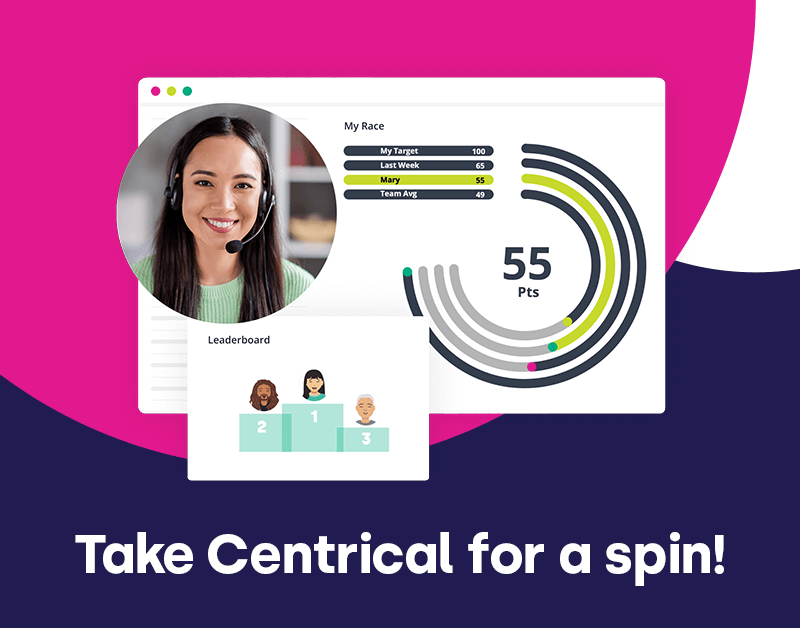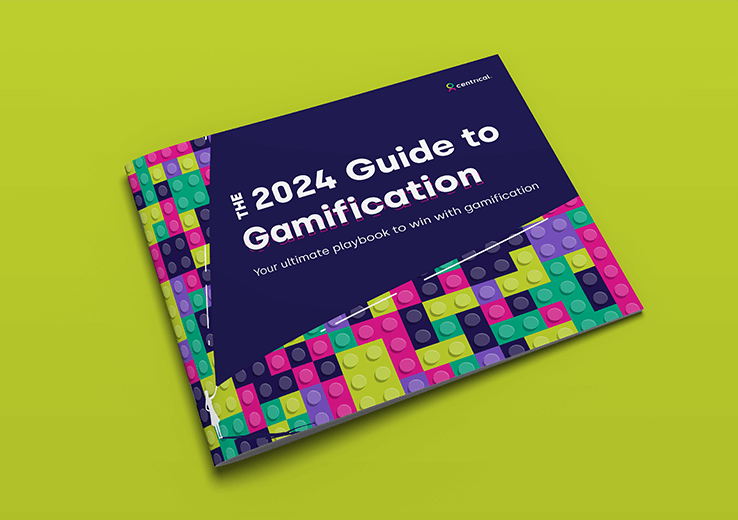How Activity Trackers Change the Way we Understand Work Performance
Wellness. Can we even imagine what that meant when cigarettes were not considered a health risk?
Being productive. What did that mean when office work was performed with a pen and paper, and knowledge workers had libraries they referred to at work?
Technology doesn’t only change the way we communicate, maintain our social circles or retrieve information. It changes the way we understand ourselves. It creates new emotions, new pleasures and pains. It profoundly affects our innermost personal and work lives.
What is the next thing that will effect a similar change?
Activity trackers are redefining how we understand ourselves and our achievement
The way activity trackers benchmark our personal performance and communicate it to the world is one of those points where technology impacts our lives. Gamification – or at least gamification 2.0 (also known as performance gamification) – is a key part of this future.
The meteoric rise in popularity of wireless-enabled wearable products, such as those by Fitbit and Jawbone – activity and wellness trackers – has brought us with one of those points where technology impacts how we think of ourselves.
Initially, before wearables, the quantified self meant self-knowledge through self-tracking with technology. You were supposed to tell what the effect of the foods you consumed – or any other activity – had on your wellness. But as wearables have gone from unsophisticated pedometers to state-of-the-art insight-engines, the very concept of ‘health’ has been demystified and broken into activities such as eating, sleeping and moving, by quantifying each and every one of these activities.
Suddenly, tracking miles a person has run becomes a truly satisfying activity, a combination of achievement, control and even exhilaration. Data shows that Fitbit users take 43 percent more steps than non-Fitbit users. Jawbone users tracked over 150 million nights of sleep last year, making it the largest sleep study in the history of humankind.
Self tracking as a form of intrinsic drive
Daniel Pink made an important point in his book “drive” – the “third drive” – intrinsic motivation, is the best and most consistent driver. Dan Ariely validated that too by showing that people work harder for intrinsic motivation than for extrinsic rewards, such as money or competition.
What activity trackers do is quantify intrinsic drive, benchmark our performance and drive us to do more. Instead of letting us guess how well we did or did not do, it shows us objective measurements, and these drive us to achieve more.
Activity tracking is transforming social proof
Every time you see someone post their run results on facebook you can see that activity trackers are also used to communicate achievement. By doing that, people are seeking the recognition of their efforts, but are also creating social proof that pulls more people into the activity tracker circle.
Activity trackers for work
But is this new toolset – tracking performance for self-motivation – applicable at work? The answer is yes. Tracking performance is applicable, and some pioneers have begun adopting it, mainly through performance gamification. Here is why the concept is a powerful one, and how it marries well with gamification.
- Frequently Quantifying Performance: Gamification and activity trackers frequently quantify performance which is tracked transparently, objectively and in real time. These are some of the core benefits behind gamification. This means that an employee is not working according to a fuzzy feeling they did really well last week. It means that they actually have the real time data and benchmarks at their fingertips. it also means that that employee’s manager is also evaluating him/her objectively. One of the new game mechanics we’ve begun using is “green day-red day” reflecting whether there was a good or bad day for the employee, as a form of self reflection and an ability to take the commitment to make the next day a better day.
- Turning Big Data into Achievable Insights: By tracking employee performance through gamification of enterprise apps, employers can easily see what’s working and what’s not and optimize work for employees.
- Sincerity and Social Support: The impact on the quantified self of a network of supportive friends, colleagues, or one’s family, is momentous. Jawbone users who lost the most amount of weight had 11 percent more teammates. The same principles apply at work. When employees see their goals on a gamification app, set clearly and transparently and based on objective measures, they are more likely to achieve them. Additionally, the fact that performance is shared with peers increased the employee’s interest in achieving these goals.
Until now, managers have been hampered in their ability to track work progress, convey powerful insights about employees and have a strong basis of facts about the work being done. Wearables can measure and track many aspects of health — from calories to steps, hours slept, minutes active, saturated fats — but what about measuring and quantifying work? Do you also think that gamification is a form of performance tracking to create intrinsic drive?
Engage and motivate your frontline teams
Improve performance with an AI-powered digital coach
Deliver world class CX with dynamic, actionable quality evaluations
Boost performance with personalized, actionable goals
Nurture employee success with the power of AI
Listen and respond to your frontline, continuously
Drive productivity with performance-driven learning that sticks
Drive agent efficiency, deliver client results
Keep tech teams motivated and proficient on products and services while exceeding targets
Maintain compliance while building customer happiness and loyalty
Enlighten energy teams to boost engagement
Engage, develop, and retain your agents while driving better CX
Improve the employee experience for your reservations and service desk agents



 Madeleine Freind
Madeleine Freind
 Natalie Roth
Natalie Roth Linat Mart
Linat Mart












 Doron Neumann
Doron Neumann Gal Rimon
Gal Rimon Daphne Saragosti
Daphne Saragosti Ella Davidson
Ella Davidson Ariel Herman
Ariel Herman Ronen Botzer
Ronen Botzer